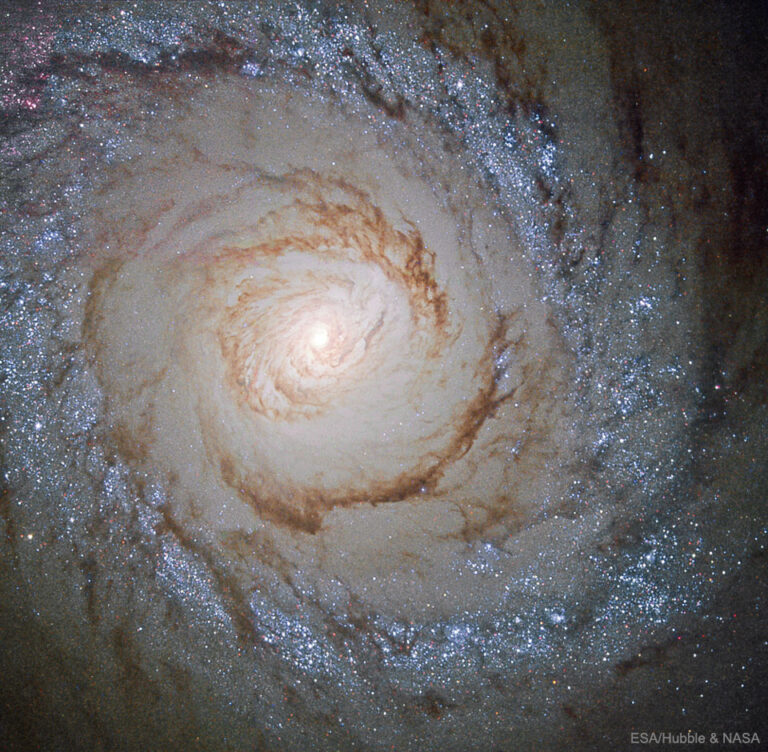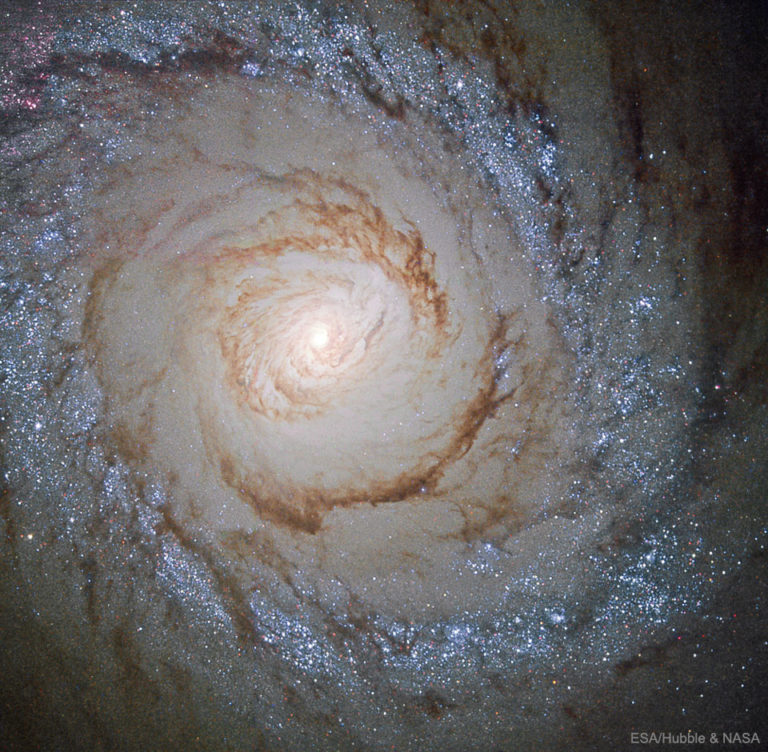星遽增(星暴)星系M94
See Explanation. Clicking on the picture will download the highest resolution version available.
请参阅说明。单击图片将下载可用的最高分辨率版本。

See Explanation. Clicking on the picture will download the highest resolution version available.
请参阅说明。单击图片将下载可用的最高分辨率版本。

2023年6月7日 M94: A Double Ring Galaxy Image Credit & Copyright: Brian Brennan Explanation: Most galaxies don’t have any rings of stars and gas — why does M94 have two? First, spiral galaxy M94 has an inner ring of newly formed stars surrounding its nucleus, giving it not only an unusual appearance but also a strong interior glow. A leading origin hypothesis holds that an elongated knot of stars known as a bar rotates in M94 and has generated a burst of star formation in this inner ring. Observations have also revealed another ring, an outer ring, one that is more faint, different in color, not closed, and relatively complex. What caused this outer ring is currently unknown. M94, pictured here, spans about 45,000 light years…

2022年7月31日 Starburst Galaxy M94 from Hubble Image Credit: ESA/Hubble & NASA Explanation: Why does this galaxy have a ring of bright blue stars? Beautiful island universe Messier 94 lies a mere 15 million light-years distant in the northern constellation of the Hunting Dogs (Canes Venatici). A popular target for Earth-based astronomers, the face-on spiral galaxy is about 30,000 light-years across, with spiral arms sweeping through the outskirts of its broad disk. But this Hubble Space Telescope field of view spans about 7,000 light-years across M94’s central region. The featured close-up highlights the galaxy’s compact, bright nucleus, prominent inner dust lanes, and the remarkable bluish ring of young massive stars. The ring stars are all likely less than 10 million years old, indicating that M94 is…

2019 December 1 Starburst Galaxy M94 from Hubble Image Credit & Copyright: ESA/Hubble & NASA Explanation: Why does this galaxy have a ring of bright blue stars? Beautiful island universe Messier 94 lies a mere 15 million light-years distant in the northern constellation of the Hunting Dogs (Canes Venatici). A popular target for Earth-based astronomers, the face-on spiral galaxy is about 30,000 light-years across, with spiral arms sweeping through the outskirts of its broad disk. But this Hubble Space Telescope field of view spans about 7,000 light-years across M94’s central region. The featured close-up highlights the galaxy’s compact, bright nucleus, prominent inner dust lanes, and the remarkable bluish ring of young massive stars. The ring stars are all likely less than 10 million years old,…